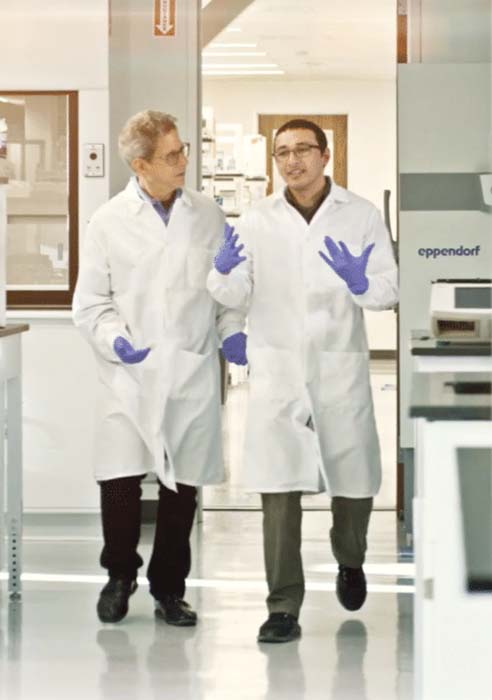About Misfolded Proteins
Misfolded proteins are biomarkers associated with neurodegenerative diseases. Detecting them helps doctors make accurate diagnosis early.

What are misfolded proteins?
To understand misfolded proteins or prion-proteins, let’s first understand what normal proteins are.
Proteins are linear chains composed of building blocks called amino acids. Each linear protein chain folds naturally into a unique three-dimensional shape.
Some proteins can misfold into one or more alternative forms. Occasionally, these misfolded shapes may lead to disease. Under rare circumstances, the misfolded proteins may induce other normal proteins to misfold. These self-replicating and toxic misfolded proteins are also known as prion-proteins.
How misfolded proteins damage the brain
Once a normal protein misfolds, it becomes a misfolded protein and gains the ability to corrupt other normal proteins to misfold. One misfolded protein can multiply into billions over several years. They can move directly from cell to cell or travel through the blood or cerebrospinal fluid.
These misfolded proteins continue to spread, destroying neurons along the way. During this development stage, the person shows no physical symptoms.
This asymptomatic stage can last years, slowly damaging the brain without being detected.
When we finally notice the loss of physical or mental abilities, we visit doctors for diagnosis. This is already the late stage.
Misfolded proteins’ ability to replicate and proliferate on a massive scale plays a key role in the progression of brain diseases. Misfolded proteins are virtually undetectable using traditional methods.
Once the concentration of misfolded proteins reaches a certain threshold within a brain cell (or neuron), it causes cell death. Unlike most cells in the body, neurons cannot regenerate. This brings irreversible loss of mental and motor abilitie
Brain disease biomarkers
In Alzheimer’s, misfolded proteins cause plaques and tangles. In Parkinson’s and Lewy body dementia (DLB), they form Lewy bodies.
As observed under the microscope, plaques, tangles, and Lewy bodies damage the brain in the following ways:
- Misfolded proteins are soluble nanoparticles that spread disease by moving between connected nerve cells.
- They appear to disrupt normal protein synthesis and degradation within nerve cells leading to cell death.
- At high concentrations, misfolded proteins tend to form large insoluble aggregates easily detected under a microscope.
Alzheimer’s biomarkers
Research shows various types of misfolded protein biomarkers associated with Alzheimer’s. Most people with Alzheimer’s have these two types:
- Abeta
- Tau
About 20-40% of people living with Alzheimer’s also show two other misfolded proteins:
- Synuclein
- TDP43
DLB and Parkinson’s biomarker
The brains of people with DLB or PD show one misfolded protein biomarker:
- Synuclein
We’re cracking the code on misfolded proteins.
Biomarker testing is a keystone to precision medicine.

We’re cracking the code on misfolded proteins.
Biomarker testing is a keystone to personalized medicine.
Risk Factors
Decades of research show several triggers causing normal proteins to misfold.
- Traumatic head injuries
- Genetics/family history
- Environmental factors
Research
For nearly two decades, our scientists have studied misfolded proteins and produced a body of peer-reviewed research papers.
Here are some key questions we’re seeking to answer:
- Why do normal proteins misfold?
- When and where does this first happen?
- How do they spread within the brain?
- What are the critical pathways driving the decline of cognitive and motor functions?
- How do they disrupt intracellular processes to cause brain cell death?

Molecular Testing Leads to Precision Medicine
“Brain diseases affect individuals differently. For instance, ten patients can have ten different biomarker profiles. In addition, symptoms often overlap, leading to challenges in diagnosis.
The SYNTap Biomarker CSF Test provides physicians with a molecular tool to significantly improve diagnostic accuracy. Our goal is to develop precision medicine for neurodegenerative diseases.”
~ Russ Lebovitz, MD/Ph.D., CEO/CoFounder

